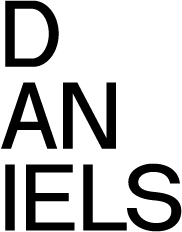
Almost Ordinary
ARC3018HF (LEC0107)
Instructor: Michael Piper
A single-family home on a cul-de-sac gets converted into housing for 18 students. A typical apartment building has its structure stacked up like a house of cards. An industrial parking lot is surrounded by Buddhist statues to create a sanctuary for worship. A big box becomes a battlefield for camouflage-clad paintball players. These events are strange, almost fictional, yet they actually happened.
"The Ordinary" is a framework architects use to learn from everyday buildings and landscapes that make up most of our cities. The idea developed in response to heroic design practices that seemed to ignore how most people actually live and the spaces they inhabit. It gave architects—who, let's admit, are prone to abstraction and jargon—a way to engage broader publics and address real-life conditions.
However, studying ordinary things can make it difficult to think critically or design speculatively for them. And sometimes, that may be what's needed.
The events described above are almost ordinary, slightly uncanny, yet entirely real. They remind us that reality can be stranger than fiction. Learning from such occurrences suggests that everyday spaces may be more open to speculation and reinterpretation than they first appear. This raises a question: can we develop critical design approaches that respond to ordinary environments without overriding the spatial and social logics already embedded within them? This inquiry will shape our thesis group's focus.
Thinking about things that are almost ordinary opens up different design practices. Typological exploration lends itself to technical research or policy making. Ethnographic approaches suggest cultural projects. The ordinary as an idea is also a subject of critical theory claimed by various ideological perspectives.
This fall's seminar will include two exercises. The first focuses on defining a social, technical, political, and/or economic context. You'll be asked to identify and draw from media sources, ethnographic studies, policy analysis, calculations, and/or anecdotal references to describe a contemporary issue that is both pressing and situated within ordinary spatial conditions. The second exercise focuses on site. You'll identify and conduct a typological analysis of a site type that recurs across an urban region. While you won't need to design for multiple sites in the thesis semester, this exercise aims to foreground repetition as a way of recognizing and articulating the spatial and social significance of the ordinary.

Image: Jenny Odell, 125 Swimming Pools, Satellite Collections 2009–2015

